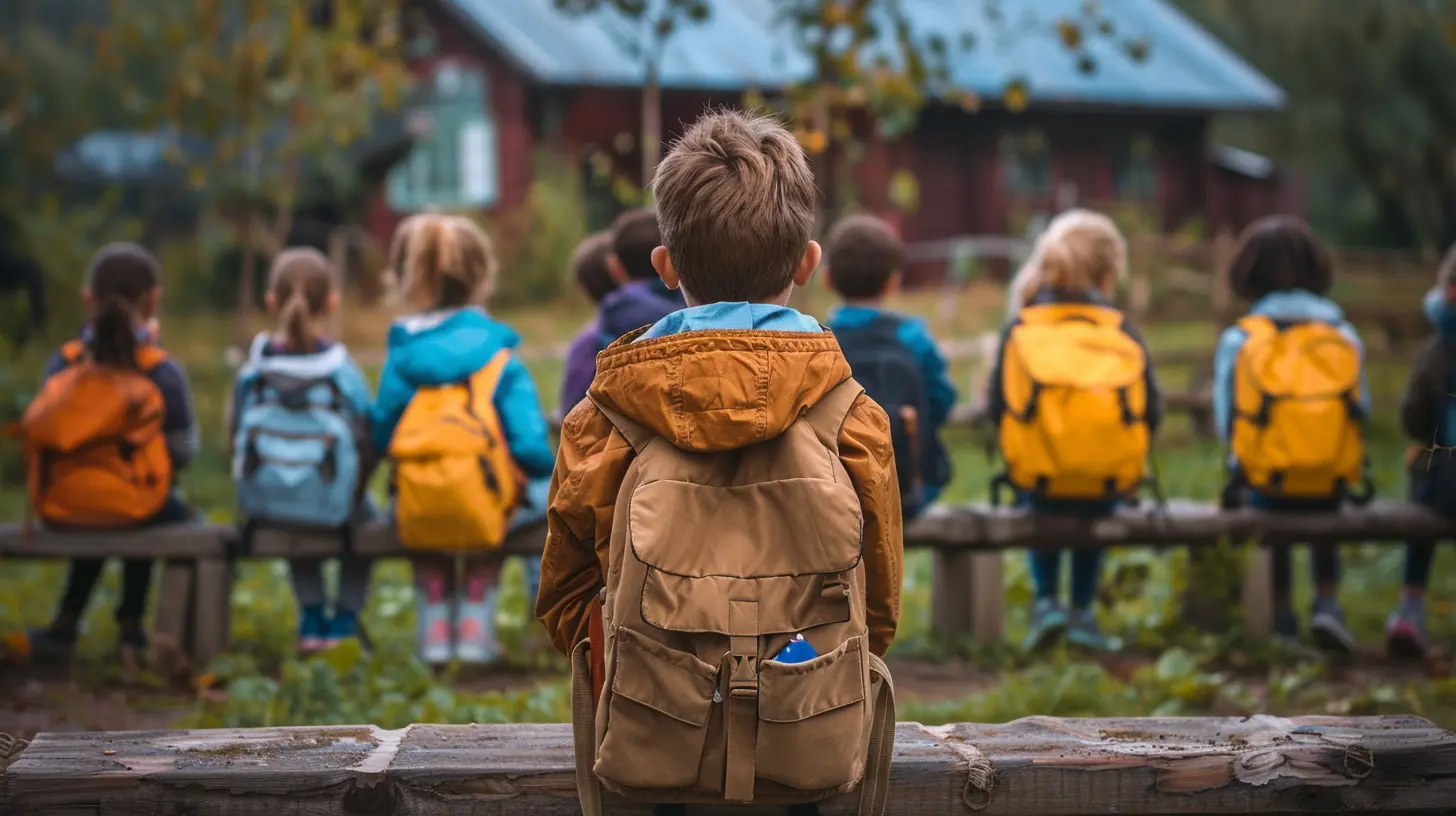Addressing the Stigma Around Mental Health in Schools
22 November 2025
Let’s face it—talking about mental health in schools can still feel like walking through a minefield. Even though we’ve come a long way in opening up conversations around anxiety, depression, and emotional well-being, something still holds many students, teachers, and parents back.
That “something” is stigma.
But here’s the deal: Mental health stigma doesn’t belong in schools. Not when students are struggling silently. Not when teachers are worn out and overwhelmed. And not when families are looking for support but don’t know where to turn.
In this article, we’re going to unpack what this stigma really looks like, how it impacts students’ success, and most importantly—what we can do to change it.
What Does Mental Health Stigma Look Like in Schools?
Stigma around mental health isn’t always loud or obvious. Sometimes it whispers through the hallways in offhand comments. Other times, it’s the quiet judgment in a teacher’s glance or the uneasiness when a student asks, “Can I talk to the counselor?”In schools, stigma shows up in a few key ways:
- Shame and Silence: Students fear being labeled "crazy", "weak", or "attention-seeking" if they open up about their mental health struggles.
- Lack of Awareness: Many peers—and even some educators—don’t understand mental health issues well enough to offer support or empathy.
- Unequal Treatment: A student with anxiety might be seen as lazy if they can’t give a presentation, while a student with a broken arm gets automatic accommodations.
See the problem?
It’s not just about calling someone names. Stigma is deeply rooted in how mental health is perceived—and ignored—in educational spaces. And the damage? It can echo through a student’s entire academic journey.
Why Is Mental Health So Hard to Talk About in Schools?
Schools are often seen as places of performance and achievement, where you’re expected to have it all together. Add social pressures, academic demands, and the awkwardness of adolescence to that mix, and you’ve got a recipe for emotional overload.So why don’t we talk about it more?
Because it's uncomfortable. Because many educators weren’t trained to recognize mental health issues, let alone talk about them. And because there’s still this outdated belief that students should "tough it out" or “focus on the positive.”
But just like we teach students to take care of their physical health—hydration, nutrition, exercise—we need to make mental health just as visible and valued. It starts with breaking down those walls of silence.
The Real Impact of Mental Health Stigma on Students
Let’s be real—mental health stigma doesn’t just hurt feelings. It has real, measurable consequences.1. Academic Struggles
When students are fighting an invisible battle, school feels like climbing a mountain with weights on their ankles. Depression and anxiety can sap motivation, hurt focus, and make even small tasks feel impossible. But when they can’t explain what’s going on, they fall behind. And their self-esteem? It crashes.2. Social Isolation
Stigma silences students. Instead of reaching out, they pull back. They withdraw from their social circles out of fear of judgment. This isolation only deepens their emotional pain, making it even harder to recover.3. Increased Risk of Crises
Worst of all, untreated mental health issues can escalate into full-blown crises. Anxiety can lead to panic attacks. Depression can lead to self-harm or suicidal thoughts. Students shouldn't have to suffer in silence just because they’re afraid of being "different."
Start the Conversation—Even If It Feels Awkward
Step one in defeating stigma? Talking about it.It doesn’t have to be a massive assembly or a fancy awareness week (though those can help). It just needs to be honest.
Teachers can mention mental health in lessons. Counselors can do classroom visits. Schools can bring in community speakers who share real-life stories. The more students hear about mental health as something normal and okay to talk about, the less scary it becomes.
And parents? You’re part of this too. Ask your kids how they’re feeling—not just about schoolwork, but emotionally. Keep the door open for those tough conversations.
Normalize Seeking Help
Let’s make something clear: Asking for help is a strength, not a weakness.We need to say this loudly and often. Because if students believe that reaching out makes them "less than", they’ll keep everything locked inside. And mental health issues that aren’t addressed don’t just disappear—they grow.
Schools can create safe spaces like wellness centers or quiet rooms. They can put up posters that say “It’s OK to Not Be OK.” They can train teachers in mental health first aid. All of this helps send a powerful message: You’re not alone.
Empower the Educators
Teachers are on the front lines. They see the behavior changes, the tired eyes, and the missing assignments. But they’re not always equipped to know what to do.Professional development that includes mental health awareness is a game-changer. That doesn’t mean turning teachers into therapists, but it does mean giving them the tools to recognize red flags, offer empathy, and direct students to the right people.
Also, let’s be kind to our educators. They deal with a lot, and many of them have their own mental health battles. Creating space for teachers to care for their own well-being is just as important.
Peer Support Can Be Powerful
You know what’s even more effective than adult-led programs? Student-to-student support.When students see their peers being open about mental health, it changes the culture. Suddenly, it becomes something you can actually talk about without fear.
Encourage peer mentoring groups, mental health clubs, and student panels. Organize events where students can safely share their stories. These initiatives not only raise awareness—they create a sense of community.
Incorporating Mental Health into the Curriculum
Why wait until there’s a problem?Mental health education should be as standard as math or science. Teaching students about emotional intelligence, stress management, and coping skills early on prepares them to handle life’s ups and downs.
Middle school and high school are the perfect times to introduce these concepts. Role-playing, group discussions, and journaling can make the learning hands-on and real.
Combatting Cultural and Societal Barriers
Here’s a truth bomb—stigma doesn’t look the same for everyone.In some cultures, mental health is an especially taboo topic. Admitting to psychological distress may be seen as a personal failure or a family shame. That’s why it’s important to approach this with cultural sensitivity.
Schools can host multilingual workshops, include diverse perspectives in mental health education, and partner with local leaders to address these barriers. Inclusivity isn’t optional—it’s essential.
Parents and Guardians: Your Role Matters
Home is the first classroom. What’s said (or unsaid) at home about emotions and mental health shapes how kids see themselves.So, don’t brush off your child’s emotions with “You’ll be fine” or “It’s all in your head.” Instead, validate their feelings. Say things like “I hear you” or “That sounds really hard.”
Be open about your own mental health journey, if you have one. Let them see how you manage stress, ask for help, or take time to unwind. Kids learn more from what we model than from what we preach.
Tech and Social Media: The Double-Edged Sword
Let’s not pretend tech doesn’t play a role in all this.On one hand, students have access to more mental health info than ever. On the other, constant notifications, toxic comparisons, and cyberbullying can seriously mess with their heads.
Schools can include digital wellness in mental health education. Talk about things like screen time, online boundaries, and recognizing misinformation. Help students develop a healthy relationship with their devices instead of letting the algorithm control their mood.
Small Steps, Big Impact
Change doesn’t have to be dramatic. Even small shifts in how we talk, teach, and treat mental health can spark something powerful.Here’s what schools can start doing today:
- Add mental health check-ins during morning meetings.
- Celebrate World Mental Health Day.
- Designate a staff member as a mental health liaison.
- Send newsletters to parents with resources and tips.
- Create quiet corners or "cool-down zones" in classrooms.
The more we weave mental wellness into the fabric of school life, the more we normalize it—and the less room stigma has to survive.
Final Thoughts
The stigma around mental health in schools isn’t going to vanish overnight. But every honest conversation, every empathetic response, and every proactive step chips away at that wall.Our students deserve to feel seen, heard, and supported—not shamed for things they can’t control. Let’s be the generation that finally says, “Enough is enough.”
Mental health is health. Period.
Let’s make schools a place where every student knows it’s okay to not be okay—and where they also know they’ll never have to face it alone.
all images in this post were generated using AI tools
Category:
Mental Health In SchoolsAuthor:

Madeleine Newton

